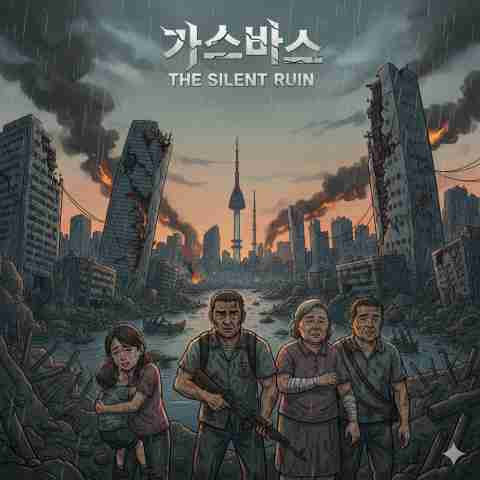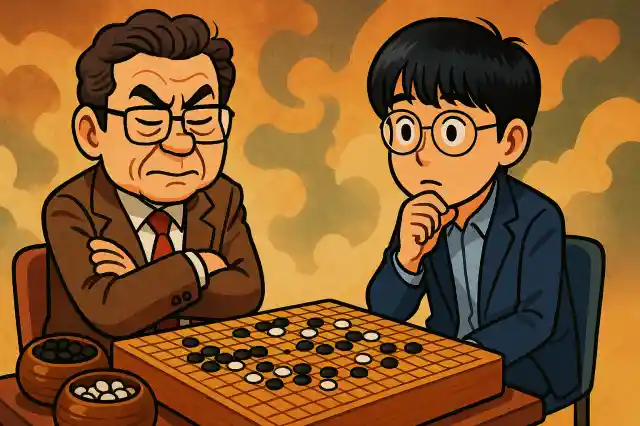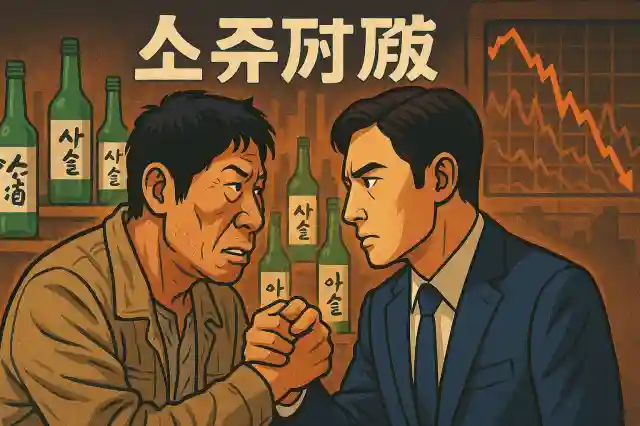Korean Cinema’s New Wave: Survival, Empathy, and “Concrete Utopia”
Exploring the Rise of Korean Survival Thrillers and Disaster Films
Korean entertainment is experiencing a global renaissance, with movies leading the charge. Among the most compelling trends is the rise of Korean survival thrillers—films that blend high-stakes action with deep emotional resonance. At the forefront of this movement is *Concrete Utopia*, a 2023 disaster film that has captivated audiences and critics alike. This blog post explores why Korean cinema, especially in the thriller and disaster genres, is resonating worldwide, and how *Concrete Utopia* exemplifies this shift.
Key Takeaways
- Korean survival thrillers and disaster films are gaining global recognition for their unique blend of action and emotional depth.
- *Concrete Utopia* is a prime example of this trend, offering a gripping narrative that explores survival, community, and morality.
- The success of Korean cinema is attributed to its ability to craft relatable stories and characters, making them accessible to global audiences.
Table of Contents
- Why Korean Thrillers and Disaster Films Are Trending
- “Concrete Utopia”: A Case Study in Survival and Society
- What Sets Korean Disaster Films Apart
- The Global Appeal of Korean Cinema
- Actionable Insights for Fans and Creators
- Conclusion: The Future of Korean Entertainment
Why Korean Thrillers and Disaster Films Are Trending
Korean movies have long been celebrated for their storytelling, cinematography, and ability to weave social commentary into gripping narratives. Recently, there’s been a noticeable surge in disaster and survival thrillers, a genre that combines visceral action with explorations of human nature under extreme stress. These films are not just about spectacle; they ask tough questions about society, morality, and what it means to be human when everything falls apart.
Globally, audiences are drawn to the emotional authenticity and visual flair of Korean cinema. The country’s filmmakers have a knack for creating relatable characters and situations, even in the most extraordinary circumstances. This has led to increased visibility on international streaming platforms and at film festivals, further cementing Korea’s place as a major player in world cinema.
“Concrete Utopia”: A Case Study in Survival and Society
*Concrete Utopia* is more than just a disaster movie—it’s a mirror held up to modern society. Directed by Um Tae-hwa and based on the webtoon *Pleasant Outcast*, the film is set in a Seoul devastated by a catastrophic earthquake. Amid the ruins, only one apartment complex, Hwang Gung (or Imperial Palace Apartments, depending on the translation), remains standing. The survivors inside must navigate not only the physical challenges of a collapsed world but also the moral dilemmas that arise when resources are scarce and trust is fragile.
Plot and Themes
The story begins in the immediate aftermath of the quake. The city is in ruins, and survivors from other buildings flock to Hwang Gung, hoping for shelter and safety. The original residents, led by the enigmatic Young-tak (played by Lee Byung-hun), must decide whether to welcome these outsiders or protect their own at any cost. What follows is a tense exploration of community, power, and the lengths people will go to survive.
The film’s central tension revolves around the residents’ decision to prioritize their own survival, even if it means turning away those in need. This creates a microcosm of society, where democratic ideals clash with the harsh reality of scarcity. The rules they establish—only residents may stay, duties must be performed, and decisions are made by consensus—reflect both the best and worst of human nature. As desperation grows, so do the moral compromises, leading to moments of both heartbreak and hope.
Characters and Emotional Depth
*Concrete Utopia* stands out for its richly drawn characters. Min-seong (Park Seo-joon), a civil servant, and his wife Myeong-hwa (Park Bo-young), a nurse, represent the moral center of the story. Myeong-hwa, in particular, embodies the hope that humanity can prevail even in the darkest times. Young-tak, meanwhile, is a complex figure whose leadership is both necessary and troubling. His actions force the audience to question what they would do in similar circumstances.
The film doesn’t shy away from showing the emotional toll of survival. Relationships are tested, alliances shift, and the line between right and wrong becomes blurred. These human elements make the story accessible and deeply moving, even as the setting grows increasingly bleak.
Visuals and Atmosphere
Director Um Tae-hwa creates a world that feels both starkly realistic and hauntingly surreal. The ruined cityscape is rendered with gritty detail, from the cracked concrete to the worn clothing of the survivors. The contrast between the relative safety of the apartment complex and the chaos outside heightens the sense of isolation and vulnerability. This visual storytelling reinforces the film’s themes and draws viewers into its world.
What Sets Korean Disaster Films Apart
Korean disaster movies like *Concrete Utopia* distinguish themselves through their blend of action, emotion, and social critique. Unlike many Hollywood disaster films, which often focus on individual heroism or spectacle, Korean entries tend to explore the collective experience. They ask how communities form, fracture, and sometimes heal in the face of catastrophe.
This approach resonates with audiences because it reflects real-world anxieties—about housing, inequality, and the fragility of social order. By grounding their stories in relatable issues, Korean filmmakers create works that are both entertaining and thought-provoking.
The Global Appeal of Korean Cinema
The success of *Concrete Utopia* and similar films is part of a larger trend. Korean movies are increasingly featured on global streaming platforms and at international film festivals, introducing them to new audiences. *Concrete Utopia* itself was selected as South Korea’s entry for the Best International Feature Film at the 96th Academy Awards, a testament to its quality and impact.
This global recognition is no accident. Korean filmmakers have honed their craft, producing works that are visually stunning, emotionally engaging, and culturally relevant. They’ve also been strategic in choosing genres—like disaster and survival thrillers—that have universal appeal.
Actionable Insights for Fans and Creators
For movie lovers, exploring Korean thrillers and disaster films is a rewarding experience. Start with *Concrete Utopia*, then branch out to other titles in the genre. Pay attention to how these films balance action with character development and social commentary.
For creators and industry professionals, the lessons are clear: audiences crave stories that are both exciting and meaningful. Investing in strong scripts, compelling characters, and authentic emotional stakes can set a project apart in a crowded market. The success of Korean cinema shows that there’s a global appetite for films that challenge as well as entertain.
Conclusion: The Future of Korean Entertainment
Korean movies, especially in the thriller and disaster genres, are more than just a passing trend. They represent a new standard for global cinema—one that values both spectacle and substance. *Concrete Utopia* is a prime example of this, offering a gripping story that stays with viewers long after the credits roll.
As the world becomes more interconnected, the influence of Korean entertainment will only grow. By continuing to innovate and tell stories that resonate across cultures, Korean filmmakers are shaping the future of the industry—and giving us all something to look forward to.
Keywords for SEO and Discovery
- Korean movies
- Korean thriller films
- Korean disaster movies
- Concrete Utopia
- survival thriller
- Seoul earthquake movie
- Korean cinema trends
- best Korean films 2023
- Park Seo-joon movies
- Lee Byung-hun films
- Korean movie reviews
- global Korean cinema
- emotional Korean films
- social commentary in movies
- Korean film industry


